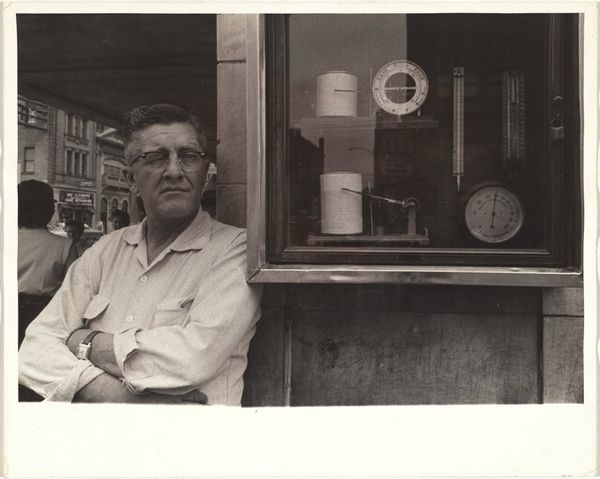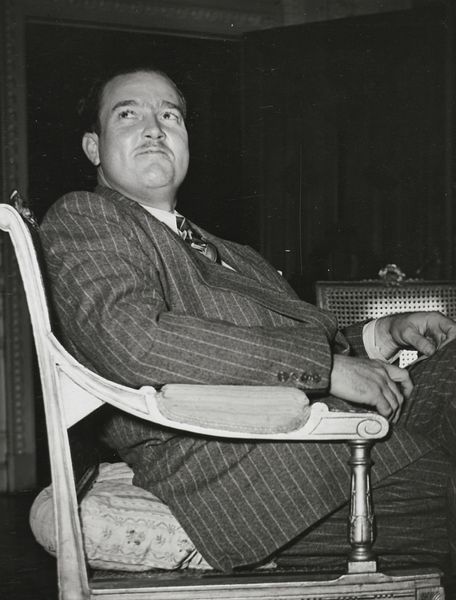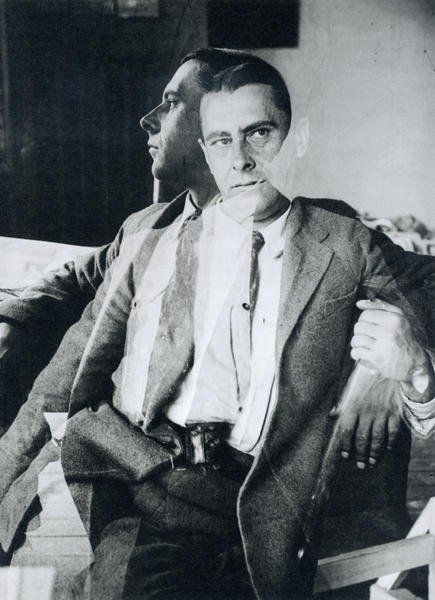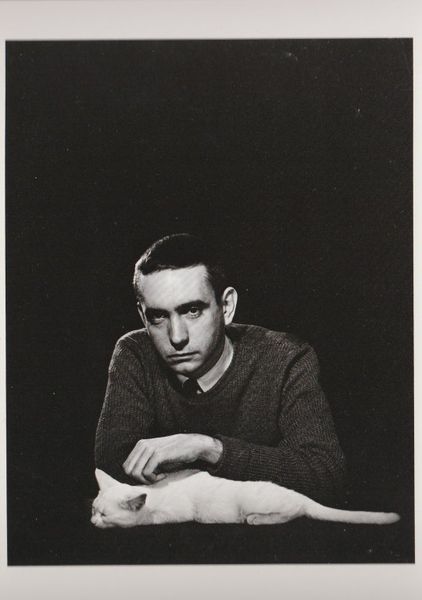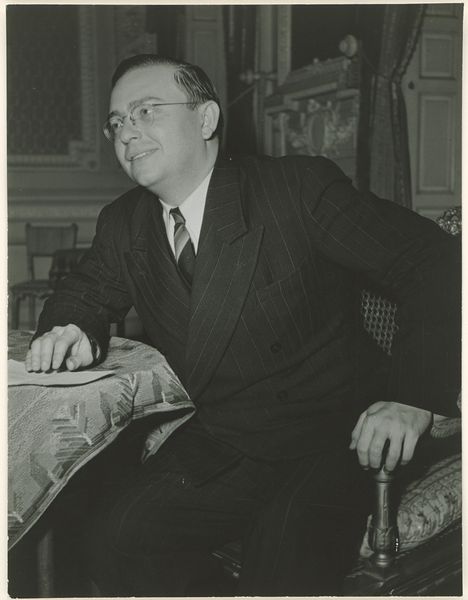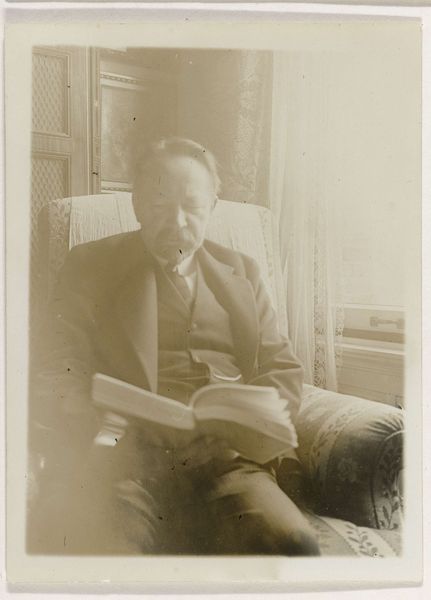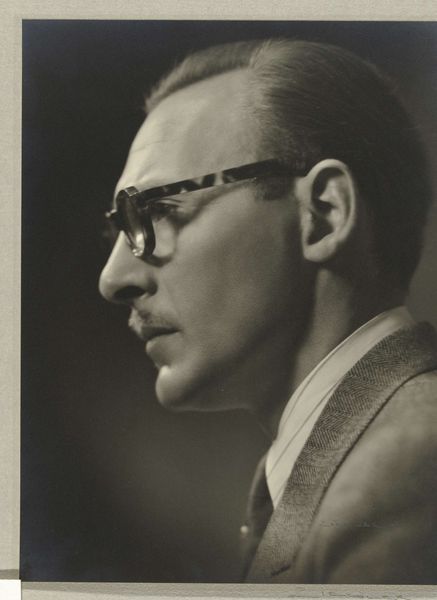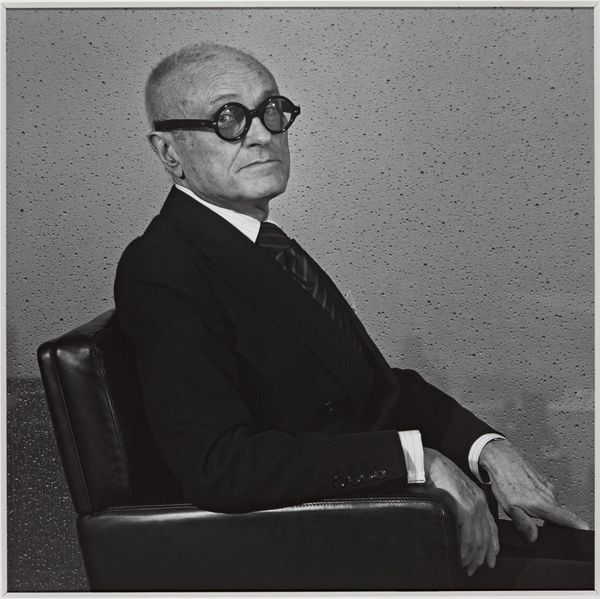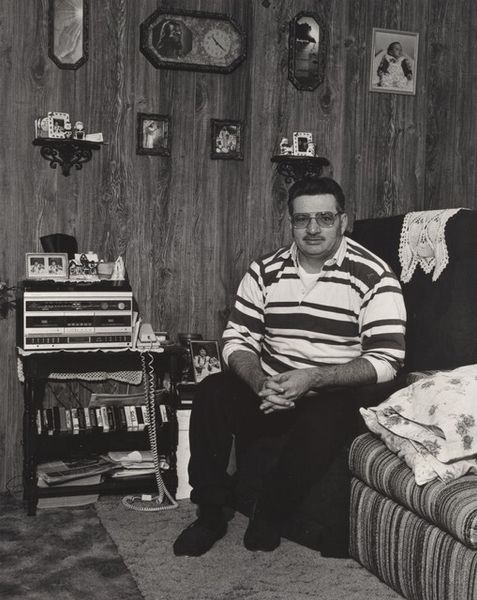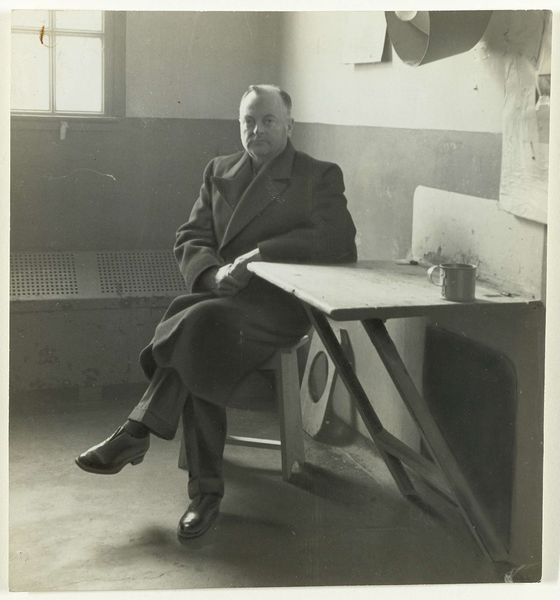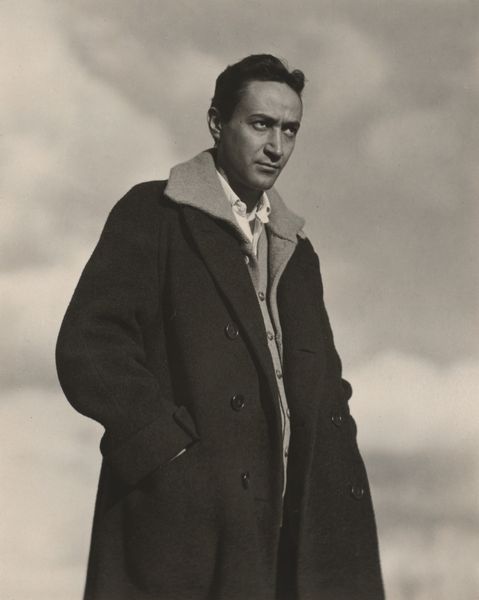
photography, gelatin-silver-print
#
portrait
#
black and white photography
#
social-realism
#
photography
#
black and white
#
gelatin-silver-print
#
monochrome photography
#
ashcan-school
#
realism
Dimensions: image: 18.3 x 18.3 cm (7 3/16 x 7 3/16 in.) sheet: 25.2 x 20.3 cm (9 15/16 x 8 in.)
Copyright: National Gallery of Art: CC0 1.0
Curator: What we’re looking at here is Milton Rogovin’s "Shenango Ingot Molds (Working People series)", created between 1978 and 1981. Rogovin worked extensively with gelatin-silver prints to create these poignant portraits. Editor: It's striking how direct this portrait is. The subject’s gaze meets ours with such intensity. There's a deep weariness etched onto his face, even a quiet dignity, if I might say so. Curator: Absolutely. Rogovin's work consistently focused on those often marginalized—the working class, the poor. He intended to give visibility to those overlooked by mainstream society. His methodology was rooted in social realism. Editor: The setting feels very intimate. We see a rosary on the wall and the floral curtains, which introduce complexity into our interpretation. The intimacy and rawness make me consider his position in the steel industry’s socio-political climate and how labor practices intersect with personal identity. Curator: Precisely. Rogovin began this series documenting workers facing layoffs and plant closures. His intention was deeply political; to expose the human cost of deindustrialization. He aimed to document both work and living environments, revealing the full spectrum of their existence. Editor: Thinking about visibility—beyond its ethical dimensions, what implications does it carry when we talk about the distribution of the real within the aesthetics of representation, especially since it evokes notions of what Allan Sekula terms the "traffic in photographs?" Curator: That's insightful. The ethics of representation is paramount here. Rogovin strived for collaboration with his subjects, giving them agency in the image-making process and in turn aiming to give a respectful image of working class communities during deindustrialization. Editor: Rogovin's commitment is unmistakable. Seeing the photograph displayed here serves as a poignant reminder of our ongoing need to re-evaluate social hierarchies and question systems of power, giving voice to the voiceless. Curator: Indeed. This image and Rogovin's project act as a bridge connecting historical awareness with contemporary dialogues, encouraging empathy for lived experiences which too often go unseen or unacknowledged.
Comments
No comments
Be the first to comment and join the conversation on the ultimate creative platform.
